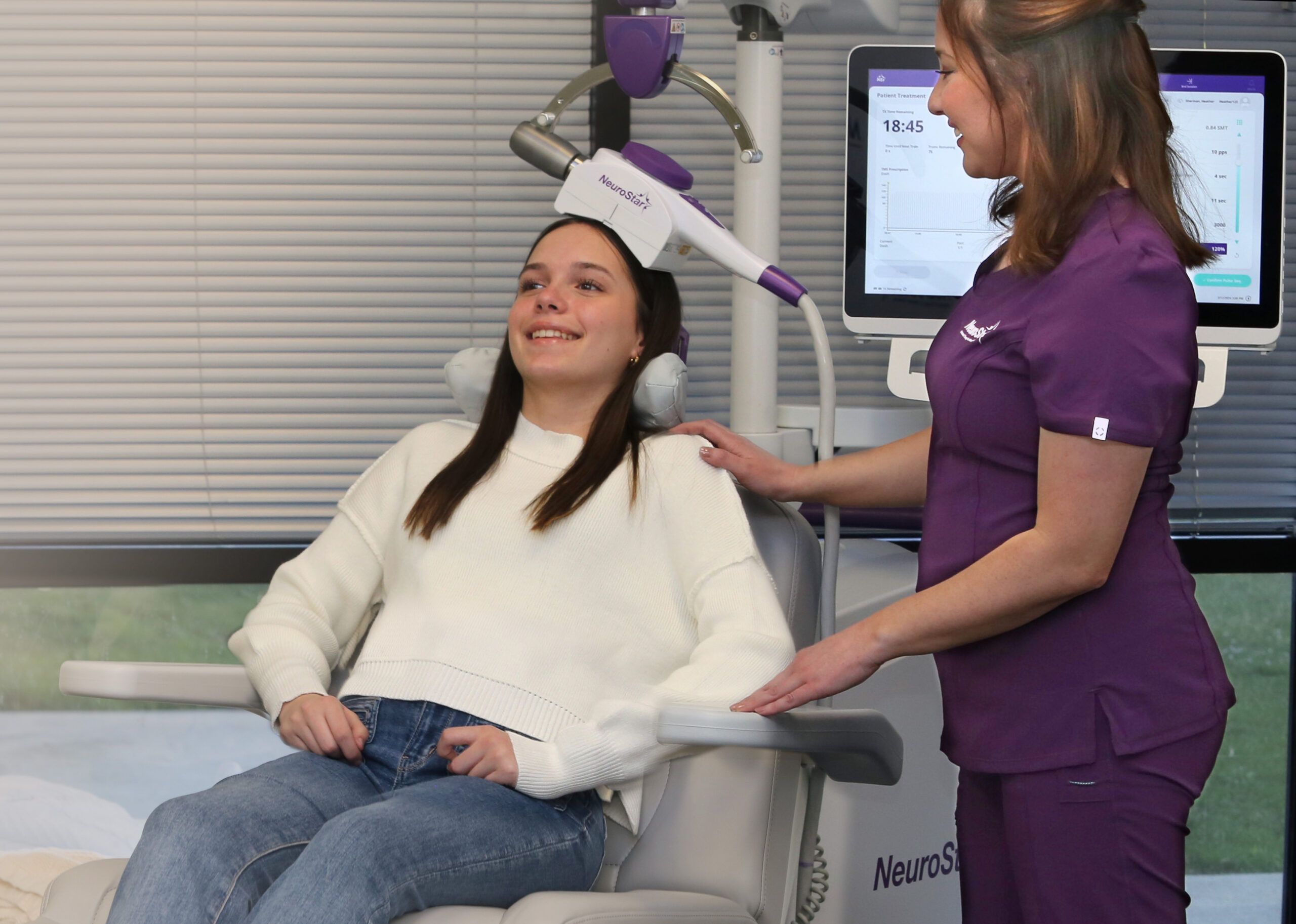Is TMS Therapy right for you?
Complete a 1-minute survey for our provider’s review.
Our staff will contact you to discuss NeuroStar TMS as a potential treatment option.
For individuals living with depression or obsessive-compulsive disorder (OCD), finding the right treatment path can take time. At Gianan Health, we offer NeuroStar Transcranial Magnetic Stimulation (TMS) therapy as an option for clients who have not experienced sufficient relief from traditional approaches such as medication or talk therapy alone.
What Is TMS?
Transcranial Magnetic Stimulation is a treatment that uses gentle magnetic fields to activate specific areas of the brain. During each session, a magnetic coil is placed against the scalp, usually near the forehead. The device delivers brief magnetic pulses to the prefrontal cortex, which is involved in regulating mood and thought patterns.
TMS is a non-invasive, FDA-cleared treatment that uses targeted magnetic pulses to stimulate areas of the brain involved in mood and behavior. It is a drug-free option that may help reduce symptoms of depression or OCD in some individuals when other treatments have not been effective.
Most treatment sessions last about 20 to 30 minutes, depending on protocol. During that time, you can sit back and relax. Many people choose to listen to music, read, or simply rest quietly.
One of the benefits of TMS is that it doesn’t require anesthesia or downtime. After your session, you can return to your usual activities, including driving yourself home. Mild side effects such as scalp discomfort or headaches are possible but often short-lived.
How Does TMS Help with Depression and OCD?
In individuals with major depressive disorder, certain regions of the brain may show reduced activity. TMS helps stimulate these areas, potentially improving emotional regulation and mood. It is typically recommended for those who have tried multiple antidepressants without the desired outcome or who prefer a non-medication-based approach.
For individuals with obsessive-compulsive disorder (OCD), TMS is used to target different parts of the brain involved in compulsive thought and behavior cycles. The treatment protocol for OCD differs slightly from that of depression and is delivered using an FDA-cleared approach designed specifically for OCD symptom reduction.
While results vary, many people report improvement in their symptoms after a full course of treatment. TMS is not a cure, but it may offer relief when other treatments have fallen short.
After Treatment: Follow-Up and Monitoring
In addition to individual TMS therapy sessions, the process also involves regular follow-up. Throughout the treatment course, you’ll check in with your provider to discuss your progress, address any side effects, and fine-tune your treatment settings if necessary.
The frequency and total duration of treatment vary by condition and individual response. Many patients begin with sessions several times per week for several weeks, followed an adjusted schedule as needed.
Your provider will work with you throughout the process to ensure your care is responsive, safe, and aligned with your needs.
Does it Work?
Yes! NeuroStar TMS therapy has been proven effective in clinical studies and real-world applications.
Here are some compelling NeuroStar statistics about patients with depression treated with NeuroStar (Sackeim HA, et al. (2020). J Affect Disord, 277:65 74.
Based on a real-world, retrospective study using CGI-S and a sample size of 615 patients):
- 83% of patients experienced significant symptom improvement.
- 62% of patients achieved complete remission from depression.

Gianan Health accepts the following insurance plans, which cover NeuroStar TMS for eligible candidates.



Is TMS Right for You?
TMS may be an option if:
- You have treatment-resistant depression or OCD
- You’ve tried multiple medications or therapies without significant improvement
- You prefer a non-systemic, non-sedating treatment
- You are not currently experiencing certain medical conditions that would make TMS inappropriate (e.g., history of seizures or metal implants near the head)
If you wonder if TMS is right for you, a consultation can help determine if it’s worth exploring further based on your health history, goals, and previous treatments.
Lasting Relief for Bolingbrook, Naperville, and the Chicago Suburbs
At Gianan Health, we understand that the journey through depression or OCD can be long and complex. Our goal is to provide thoughtful, evidence-based options that respect where you are in your process. If you’re curious about TMS therapy, we’re here to answer your questions and help you make an informed decision without pressure. To schedule an appointment and learn if NeuroStar TMS is right for you, call us today at 630-340-1620.
